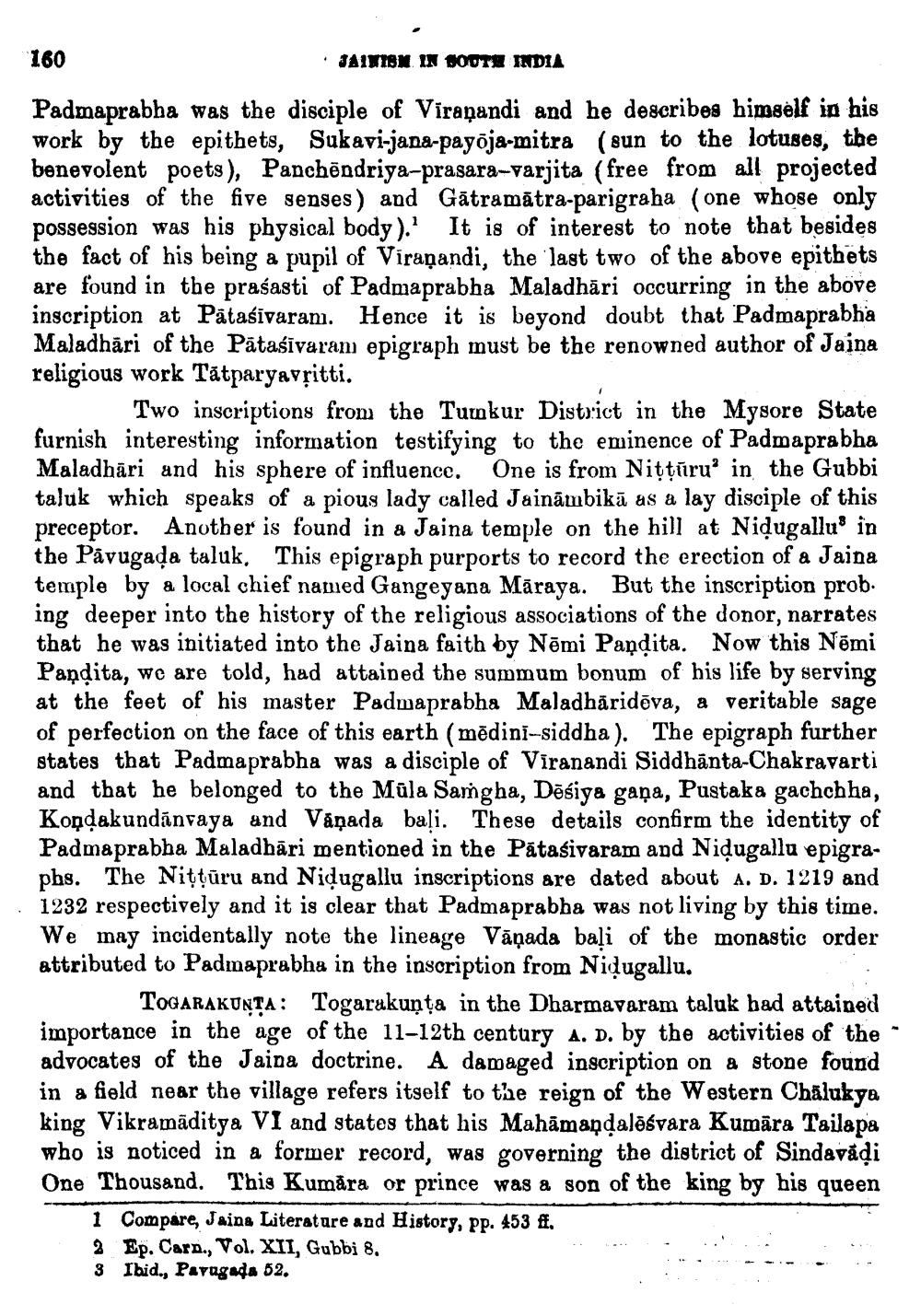________________
160
JAINISM IN SOUTH INDIA
Padmaprabha was the disciple of Virapandi and he describes himself in his work by the epithets, Sukavi-jana-payōja-mitra (sun to the lotuses, the benevolent poets), Panchendriya-prasara-varjita (free from all projected activities of the five senses) and Gatramatra-parigraha (one whose only possession was his physical body).' It is of interest to note that besides the fact of his being a pupil of Viranandi, the last two of the above epithets are found in the prasasti of Padmaprabha Maladhari occurring in the above inscription at Patasivaram. Hence it is beyond doubt that Padmaprabha Maladhari of the Pataśīvaram epigraph must be the renowned author of Jaina religious work Tatparyavṛitti.
Two inscriptions from the Tumkur District in the Mysore State furnish interesting information testifying to the eminence of Padmaprabha Maladhari and his sphere of influence. One is from Niṭṭuru' in the Gubbi taluk which speaks of a pious lady called Jainambikā as a lay disciple of this preceptor. Another is found in a Jaina temple on the hill at Niḍugallu3 in the Pavugaḍa taluk, This epigraph purports to record the erection of a Jaina temple by a local chief named Gangeyana Māraya. But the inscription prob ing deeper into the history of the religious associations of the donor, narrates that he was initiated into the Jaina faith by Nemi Pandita. Now this Nēmi Pandita, we are told, had attained the summum bonum of his life by serving at the feet of his master Padmaprabha Maladhāridēva, a veritable sage of perfection on the face of this earth (mēdini-siddha). The epigraph further states that Padmaprabha was a disciple of Viranandi Siddhanta-Chakravarti and that he belonged to the Müla Samgha, Desiya gana, Pustaka gachchha, Koṇḍakundanvaya and Vanada bali. These details confirm the identity of Padmaprabha Maladhāri mentioned in the Patasivaram and Niḍugallu epigraphs. The Niṭṭūru and Niḍugallu inscriptions are dated about A. D. 1219 and 1232 respectively and it is clear that Padmaprabha was not living by this time. We may incidentally note the lineage Vanada bali of the monastic order attributed to Padmaprabha in the inscription from Niḍugallu.
TOGARAKUNTA: Togarakunta in the Dharmavaram taluk had attained importance in the age of the 11-12th century A. D. by the activities of the advocates of the Jaina doctrine. A damaged inscription on a stone found in a field near the village refers itself to the reign of the Western Chalukya king Vikramaditya VI and states that his Mahāmaṇḍalēśvara Kumāra Tailapa who is noticed in a former record, was governing the district of Sindavaḍi One Thousand. This Kumara or prince was a son of the king by his queen
1 Compare, Jaina Literature and History, pp. 453 ff.
2 Ep. Carn., Vol. XII, Gubbi 8.
3 Ibid., Pavagada 52.




